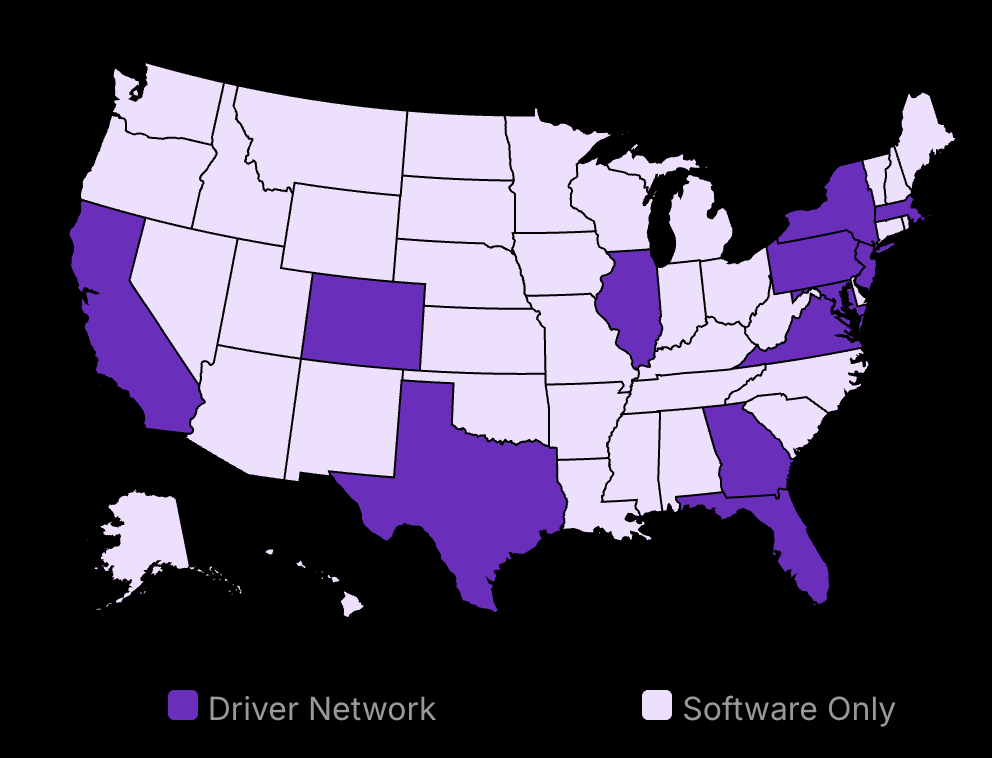Picture this: It’s Christmas Eve, and you’re staring at your sales figures. They’re not terrible, but they’re not great either. You’ve done everything by the book—offered holiday deals, decorated with festive touches, and even considered online shopper trends. So why aren’t you seeing the surge you expected?
Here’s a hard truth: In the cutthroat world of holiday retail, “by the book” doesn’t cut it anymore.
But what if I told you there are 10 surprising tactics that could transform your Christmas shopping season from “meh” to “mind-blowing”?
These aren’t your grandma’s marketing tips. They’re unconventional, they’re bold, and they might just be crazy enough to work.
Why should you care? Because while you’re reading this, your competitors are already plotting their holiday strategies. And with the rush of online shoppers, holiday deals, and last-minute customers looking for free shipping offers, every second counts.
Think you know everything about boosting Christmas sales? Think again.
We’re about to dive into a world where eco-friendly products outsell plastic fantastic, virtual events trump in-store promotions, and the key to customer loyalty might be hiding in the last place you’d look.
Are you ready to leave the competition in the dust and make this your most profitable holiday season ever?
Fair warning: These tips aren’t for the faint of heart. They require courage, creativity, and a willingness to break the mold. But for those brave enough to try them, the rewards could be extraordinary.
So, are you in? Are you ready to revolutionize your approach to Christmas shopping and holiday sales?
Let’s unwrap these game-changing strategies and make your business the go-to for customers ready to purchase this holiday season.

Save 80% of delivery management time
We handle everything:
- Dedicated operations manager
- Real-time tracking dashboard
- Automated customer notifications
- Urgent issue resolution
Step 1: Develop Effective Seasonal Holiday Promotions
Limited-time offers create urgency and prompt faster buying decisions.
Holiday bundles encourage large purchases by presenting value and convenience.
This section will focus on practical strategies to increase Christmas sales through seasonal promotions.
Total Holiday Sales Forecast
The National Retail Federation (NRF) forecasts holiday sales to grow between 2.5% and 3.5%, totaling approximately $980 billion to $990 billion in 2024.
Create Limited-Time Offers
A limited-time offer is a tactic that makes customers act quickly. The fear of missing out can drive sales faster than any ad. Make the offer clear. State exactly how long it lasts. Highlight this deadline in every piece of marketing, from emails to social media. This urgency nudges your customers into making a purchase sooner rather than later.
Why Limited Time Offers Work
Time limits on discounts can boost sales. They create a sense of urgency that encourages quick buying decisions. Use strong calls-to-action on your website and in emails. This boosts awareness of the deadline and can increase conversion rates.
Highlight Discount Deadlines
The foundation of any limited-time offer is a clear deadline. Use banners on your website. Add a countdown timer to product pages. Include the end date in all marketing pieces. This clarity helps manage customer expectations and influences their shopping behavior.
Offer Holiday Season Bundles
Holiday bundles are crowd-pleasers. They pack value and appeal by grouping items together at a lower price. This not only attracts budget-conscious shoppers but also simplifies gift-giving. Imagine offering a bundle with a variety of your best-selling items. Customers get a deal, and you move more inventory.
Benefits of Bundling Products
Bundling isn’t just about discounting. It’s about providing solutions. Each bundle should make sense and appeal to customer needs. Use themes, like “holiday relaxation” or “festive kitchen essentials.” By positioning bundles as ready-to-go gifts, you cater to last-minute shoppers.
Gift Spending
As per Adobe forecast, of the total spending, approximately $641 will be allocated for gifts for family and friends during 2024 holiday season.
Promote Bundles as Perfect Gift Ideas
Bundling turns a regular purchase into a gift choice. Highlight these bundles as ideal presents in your marketing channels. Use vivid images and descriptions that paint the bundle as a thoughtful, hassle-free gift solution.
How to Implement Bundling
Assess your inventory for items that pair well.
Consider the overall value and potential discount.
Ensure the bundle pricing reflects significant savings compared to individual item purchase.
Katherine Barchetti once said, “Make a customer, not a sale.” This echoes the idea that promotions should focus on adding value to the customer experience over increasing sales alone.
It’s essential to comprehend customer needs during the Christmas season. Planning your sales campaign requires starting early, ideally by October or early November. This gives ample time to create buzz and anticipation.
When to Start Promotions
Early promotion activates the holiday mood and secures early bird shoppers. This period is crucial for building momentum leading to peak Christmas shopping times.
David Ogilvy’s advice rings true: “What really decides consumers to buy or not to buy is the content of your advertising, not its form.” So while delivery is key, content quality and relevance drive purchases.
Early Shopping Trends
About 30% of shoppers begin their holiday shopping as early as October or even earlier.
Communicate clearly about your promotional strategies. This makes potential customers aware of the compelling benefits awaiting them, setting the stage for more advanced marketing tactics to follow.
Step 2: Enhance Your Holiday Marketing Strategies
Use social media to drive engagement.
Tailor emails to customer segments.
Boost sales by understanding trends.
Use Social Media Advertising
Social media is a vital tool during the holidays. Start by targeting ads to users based on their interests and past purchases. Platforms like Facebook and Instagram allow precise targeting. Focus on creating ads that feature festive themes and colors. This engages users visually and evokes the holiday spirit. Use high-quality images and videos that capture attention. Include call-to-action buttons, like “Shop Now,” to encourage immediate responses.
Monitor your campaigns closely. Use analytics to track which ads perform well and adjust others. This helps maximize your budget. Engaged customers on social media are likely to convert. So, share stories and reels, not just static posts. Remember, 75% of millennials value a brand’s social media presence. Use this to your advantage by keeping your content current and appealing.
Timing and Frequency
Post frequently but not excessively. Quality over quantity is key. Aim to post at least three times a week. This keeps your brand in the conversation without overwhelming your audience. Pay attention to the timing of your posts. Early morning and late evening are often the best times to reach more people. Consider using scheduling tools to automate this process for efficiency.
Utilize Email Campaigns
Email marketing remains effective for direct communication. Start by segmenting your audience. This means dividing your email list based on customer behaviors and preferences. Send personalized offers to long-time shoppers. Include special discounts or early access to sales. This makes them feel valued. A study showed that personalized emails deliver six times higher transaction rates than generic ones.
Inbox Advantage
68% of holiday shoppers pay closer attention to company emails during Christmas.
Craft engaging subject lines. They should be short and catchy to increase open rates. Use festive language to create excitement. The body of the email should be clear and concise. Highlight the benefits of the promotion. Use bullet points for easy readability. Include clear call-to-action phrases like “Redeem Offer” or “Shop the Sale.”
Testing and Tracking
Always conduct A/B testing on your email campaigns. This involves sending two versions of an email to see which performs better. Experiment with different subject lines, images, and offers. Check open rates, click-through rates, and conversion rates. These metrics will guide your future campaigns.
Ensure emails are mobile-friendly. Many users check emails on their phones. A well-designed email should be easy to read on small screens. Finally, monitor the impact of each campaign on sales. This will help you refine your marketing strategy throughout the season.
Digital promotions can significantly boost sales compared to traditional methods, with 89% of advertisers seeing better results from online ads.
Prepare your team to handle increased email inquiries as well. Quick and helpful responses can enhance the customer experience and potentially increase sales.
By refining your marketing efforts with these tactics, you’ll be well on your way to capturing a larger share of the holiday market.
Step 3: Optimize Your Online Store’s Sales Funnel
Speed up your website to keep visitors engaged.
Make checkout simple to reduce cart abandonment.
Offer various payment methods for convenience.
E-commerce Growth Forecast
In 2024 holiday season, e-commerce sales are expected to reach $295 billion to $300 billion, reflecting a growth of 8% to 9% compared to the previous year.
Improve Website Speed and Mobile Optimization
A smooth, fast website helps keep people on your site longer. One in four people will leave if it takes more than four seconds to load. Here’s how to ensure your website is quick and efficient.
Test Your Website Speed
The first step is to check how long your website takes to load. Use tools like Google PageSpeed Insights or GTmetrix for this. They provide reports on load times.
Optimize Images and Scripts
Large images slow down your site. Compress them using tools like TinyPNG. Also, look at scripts running on your site. Use only essential ones. Minimize JavaScript and CSS files as well.
Enable Browser Caching
Browser caching stores parts of your website on a visitor’s device. This helps your site load faster when they return. Most Content Management Systems (CMS) like WordPress have plugins to set this up easily.
Make Sure Your Website is Mobile-Friendly
More people shop online using their phones. Ensure your website adjusts to different screen sizes. Use the “mobile-friendly test” on Google Search Console to check your site’s responsiveness.
Mobile Shopping Dominance Forecast
Mobile spending in 2024 holiday season is projected to account for 53.2% of online shopping, equating to about $128 billion in mobile revenue.
Simplify the Checkout Process
A complicated checkout leads to abandoned carts. Here’s how to make your checkout as simple and effective as possible.
Reduce Steps in Checkout
Analyze your checkout process. Remove unnecessary fields. Aim to let customers check out in as few clicks as possible. Offer a guest checkout option. This avoids the need for new customers to create an account.
Provide Multiple Payment Options
Not everyone uses the same payment methods. Offer several options like credit cards, PayPal, and Buy Now, Pay Later. This increases the chances of completing more sales.
Sales funnels can improve conversion rates by up to 300%.
Include Trust Signals
People want to trust your site. Show security badges at the landing page and checkout, like SSL certificates or guarantees of safe transactions. Also, user reviews close to the payment page can reassure new buyers.
Set Up Cart Abandonment Emails
Sometimes customers leave carts behind. If you have their email, remind them. These emails can include a discount code to encourage them to complete the purchase. This needs to be set up with your email marketing platform.
Optimizing your sales and marketing funnel is not just about pleasing algorithms—it’s about meeting your customer’s expectations and needs. By ensuring your site is fast and checkout is easy, you improve the shopping experience and boost sales potential.
Step 4: Leverage Current Christmas Retail Trends
-
Follow eco-friendly practices for impact.
-
Embrace local and handmade goods for uniqueness.
-
Attract conscious and unique-focused buyers.
Incorporate Eco-Friendly Products
Modern shoppers care about the planet. You can capture their interest by offering eco-friendly products. Customers are looking for brands that align with their values. Here’s how to do it:
Source Sustainable Materials
Look for suppliers that provide sustainably sourced materials. This could include recycled materials, organic fabrics, or biodegradable products. If you can, get certifications to prove your eco-credentials. Print this info clearly on your packaging to boost trust.
Recyclable and Minimal Packaging
Switch to recyclable packaging to reduce waste. Use less packaging to make a bigger impact. Highlight this on your product pages. Customers often skip products with too much packaging. You can catch their attention by showing off your minimal approach.
Emphasize Local and Handmade Items
Shoppers love unique gifts, especially when they come with a story. By focusing on local and handmade items, you tap into this desire. Using a photo book maker, you can create personalized keepsakes that add a heartfelt touch to any gift.
Partner with Local Artisans
Reach out to artisans in your area. Collaborating with these creators can lead to exclusive products that no one else offers. This adds a unique twist to your inventory. Plus, promoting local artists can attract customers who want one-of-a-kind items.
Market Artisan Stories
Sharing the stories behind handmade items adds value. Use social media and product pages to feature the artisans. A short video or blog post can make these products more appealing. Consumers are more likely to purchase when they understand the story and effort behind it. This approach also encourages a more personal connection with your brand.
Consider these strategies to stand out this holiday season. These steps not only help with sales but also place your brand as a thoughtful and community-supportive business. “Shoppers continue to rely heavily on digital resources for purchases, both during and after the peak holiday season,” aligning with typical consumer behavior customers purchase patterns as reported by Google’s Consumer Insights.

Step 5: Strengthen Customer Relationships
Quick support boosts satisfaction.
Loyalty programs increase repeat customers.
Provide Exceptional Customer Service
Ensure Quick Responses to Inquiries
Fast responses are crucial. Most customers expect help quickly, and many want it in real-time. In fact, 41% of customers prefer live chat over email or phone support. Live chat ensures quick problem-solving and boosts satisfaction. About 82% of customers have rated this kind of support as satisfactory. To set this up effectively, train your service team thoroughly. Teach them to handle requests with confidence and empathy.
Offer Easy Returns and Exchanges
Make returns hassle-free. Clear return policies build trust and satisfaction. Outline steps on your website. Put policies where customers see them. Consider extending return windows during the holidays. This flexibility can increase buyer confidence. Make it a point to simplify the process. Use pre-paid return labels and straightforward instructions. Offer free shipping or exchanges as an alternative. This can potentially retain sales instead of offering refunds.
Implement Loyalty Programs for Repeat Purchases
Reward Points for Every Purchase
Loyalty points encourage people to buy more. You give loyal customers more points for each purchase. Set up a system where these points convert into discounts or free items. Use easy-to-understand point systems. Make sure customers know how to earn and use points. Promote this program through email and your website. It’s essential to get people excited about the rewards.
Offer Special Deals for Members
Membership deals are great incentives. Create a special club with exclusive benefits. These can be early access to sales, VIP-only discounts, or gift surprises. Include attractive perks to keep members interested. Make joining simple, with clear benefits listed upfront. If people see the value, they’re more likely to join. Survey your customers to tailor offers to what they want. This personal touch can increase your loyalty program’s success.
Price Rules Holiday Shopping
When making holiday purchases, consumers prioritize price (50%), sales and discounts (22%), and free shipping (13%) over other factors like fast shipping, in-store pickup, and easy returns.
Remember, offering fast service and rewarding loyalty can drastically improve relationships with customers. These strategies keep them coming back. They feel valued and happy customers are likely to choose your business over the competition.
Advanced Tips for Boosting Holiday Sales
Engage customers with virtual events and collaborations.
Avoid generic marketing; plan for demand and manage stock.
Additional Advice or Alternative Methods
Consider Hosting a Virtual Holiday Event
Virtual events can meaningfully engage your customer base, creating excitement and interaction without geographical limitations. By organizing a virtual holiday-themed event, you can showcase products, host live demonstrations, or facilitate Q&A sessions. This kind of interactivity fosters community. Tools like Zoom or Microsoft Teams can be tailored to fit various event structures. For example, virtual pop-up shops or live-streamed gift guides are effective.
Retailers like Nordstrom have hosted such events, generating big sales and notable customer interest. With the rise of online interaction, virtual events could stimulate interest and increase sales. Research by Statista indicates 70% of savvy shoppers attend online events for exclusive deals. While implementing this, keep an eye on event-specific platform performance and ensure technical backups to avoid potential disruptions.
Collaborate with Influencers to Expand Reach
Partnering with influencers offers access to wider audiences and lends authenticity to your product endorsements. Choose influencers whose values match your brand; this ensures relevance. Product reviews, “unboxing” videos, or sponsored posts can effectively engage their followers. Influencers also help in creating content that blends organically with their personal brand, which resonates better with their target audience.
There are successful examples like the partnership between fashion retailers and fashion bloggers, which greatly enhanced visibility and credibility during peak shopping seasons. Consider using platforms like Upfluence or Aspire for finding and managing influencer relationships. Measuring ROI on such collaborations is crucial, so tracking metrics like engagement rates and conversion is key.
Strong Social Media Presence is Essential
About 34% of shoppers utilize social media platforms for holiday purchases, emphasizing the necessity of a strong online presence for brands.
Common Pitfalls and How to Avoid Them
Avoid Generic Marketing—Be Specific to the Christmas Theme
Generic marketing has limited appeal. Tailoring your message to resonate with the Christmas spirit can make a huge difference. Think about holiday-specific visuals, stories, and messages that bring home the emotional side of buying. Customers are more likely to engage with content that evokes holiday joy or nostalgia. Be mindful of cultural nuances in different regions and audiences to avoid generic pitfalls.
It’s not just about fitting the theme; it’s about standing out while doing so. Observing trends from previous years reveals the importance of creativity in campaigns. Those that incorporate heartfelt storytelling or unique Christmas traditions often outperform generic campaigns. Reflecting on success stories like Coca-Cola’s seasonal campaigns gives insight into crafting a memorable message.
Budget for Increased Demand and Avoid Stock Shortages
A major challenge during the holiday season is managing increased demand without facing stock shortages. Forecasting demand using historical sales data and current market trends is a necessary starting point. Reliable inventory management systems like NetSuite or TradeGecko can support tracking and adjusting stock levels in real-time.
Additionally, building buffer stock and maintaining solid relationships with suppliers are critical practices. It’s not uncommon for small businesses to lose sales due to oversights in planning for demand fluctuations. Strategies like “just-in-time” stocking can be risky without a robust logistical plan. For further reading, the book The New Warehouse Management by James T. Young delves deeper into optimizing supply chain and inventory for retail.
Always keep a close tab on consumer sentiment over these festive months, adjusting your sales approach with agility. This foresight ensures you can swiftly implement necessary adjustments, avoiding embarrassing out-of-stock notices that can harm customer trust.
Troubleshooting Common Issues
Quick solutions for a website that crashes.
Steps to manage stock shortages smoothly.
Solutions to Potential Problems
What to do if your website crashes due to traffic surges.
A website crash during a traffic surge can cost you sales and damage customer trust.
Have a Backup Plan:
Prepare Your Team: Ensure your technical team knows what to do during a crash.
Technical Contact: Keep your developer team on standby.
Implement a Content Delivery Network (CDN):
What is a CDN? It’s a system that helps distribute the load by using servers around the world.
Steps to Set Up CDN:
Choose a CDN provider like Cloudflare or Akamai.
Follow their integration guide specific to your website platform. Check their help sections for platform-specific guides.
Test your CDN setup to make sure content loads properly.
Increase Server Capacity:
Check Current Usage: Know your normal traffic and peak limits.
Contact Hosting Provider: Instruct them to expand your server capacity during holidays. Some providers offer burstable hosting plans, which automatically increase capacity during high demand.
Use Caching:
What is Caching? It temporarily stores parts of your site to reduce load times.
Methods:
Use plugins like WP Super Cache if your site is on WordPress.
Enable server-side caching through your hosting provider’s control panel.
Monitor Performance:
Tools: Use services like Pingdom or New Relic to keep an eye on site load times.
Set Alerts: Configure alerts for your site’s performance dips.
Communicate with Customers:
Social Media Updates: Inform your customers through Facebook or Twitter if your site is down and when you expect it to be back up.
Status Page: Maintain a status page to update users.
Methods to handle insufficient stock during peak times.
Running out of stock can upset customers and potentially lead them to shop elsewhere.
Inventory Forecasting:
Analyze Past Sales: Review last year’s holiday sales to forecast demand.
Order Buffers: Add 10-20% to your order to cover unexpected demand.
Trend Analysis: Look at current sales trends and adjust accordingly.
Set Up Alerts for Low Stock Levels:
Inventory Management Software: Tools like TradeGecko or Brightpearl can send alerts when stock is low.
Manual Restock Alerts: If using spreadsheets, set conditional formatting to highlight low inventory thresholds.
Prioritize High-Demand Products:
Focus Resources: Allocate more stock to best-sellers.
Monitor Daily: Check sales reports every day to make quick decisions.
Communicate Supply Status:
Notify Customers: If an item is low, inform customers through your website.
Estimated Restock: Give an estimated date when products will be available again.
Have Backup Suppliers:
Supplier Network: Identify alternative suppliers who can provide stock on short notice.
Maintain Relationships: Regularly communicate with backup suppliers to ensure they can handle a sudden order increase.
Offer Alternatives for Out-of-Stock Items:
Related Products: Suggest similar items when something is run out.
Wait List: Enable sign-ups for notifications when an item is back in stock.
Implementing these strategies will mitigate downtime and manage inventory more effectively, ensuring a smoother shopping experience for customers.

Further Resources and Reading
Gain insights into boosting holiday sales with advanced guides.
Strategically see why holiday skills boost competitive edge.
Explore resources that deepen understanding of holiday marketing.
Related Topics or Advanced Guides
Creating impactful holiday ad campaigns can dramatically shape how your brand is perceived during this bustling period. To make ads that resonate, consider looking into resources that provide deeper insights into consumer psychology, particularly around holiday emotions and readiness to spend. The inclusion of real-world case studies, like those of Coca-Cola or Macy’s, showcases how storytelling in ad campaigns has spurred consumer engagement over the years.
The landscape of search engine optimization (SEO) shifts during holiday peaks due to increased online activity. Adapting SEO strategies can ensure visibility in a crowded digital marketplace. Resources like Moz’s SEO Holiday Guide or SEMrush webinars can offer practical tips on optimizing keywords and content specifically tailored for holiday seasons. By studying these trends, businesses can learn how to align SEO efforts with holiday shopping habits to maximize visibility.
Online Search Drives Shopping Decisions
80% of shoppers research online before buying, often starting with a search engine.
Dive deeper:
Holiday Marketing Campaigns by Ryan Deiss
SEO and Beyond by Rand Fishkin
Why This Skill/Task Matters
The holiday season can make or break the year for many businesses. This period often dictates the sales trajectory, accounting for a significant portion of annual earnings. Understanding the influence of the holiday rush can assist businesses in positioning their products effectively in a saturated market. For instance, 76% of shoppers seek product reviews, influencing their trust and purchase decision. This illustrates the heightened importance of customer feedback and product descriptions during this period.
Gaining a competitive advantage during Christmas isn’t solely about discounting products but capturing customer attention through unique offerings and seamless shopping experiences. Knowing that 80% of customers plan to shop more frugally this year suggests that competitive pricing and perceived value in holiday packages could provide an edge.
Dive deeper:
Contagious: How to Build Word of Mouth in the Digital Age by Jonah Berger
Influence: The Psychology of Persuasion by Robert B. Cialdini
Anecdotes and Case Studies
In past years, brands like John Lewis have used emotional storytelling to create renowned holiday campaigns. This approach invokes tradition and sentiment, often positioning their products as integral to holiday rituals. Another successful technique is exemplified by LocaliQ’s advice on early campaign deployment. Emphasizing a head start aligns well with stats indicating that 23% of consumers start shopping as early as August. Addressing this early interest can capture consumer attention before competitors enter the scene.
Moreover, engaging through platforms such as TikTok, where 1 in 2 users source gift ideas, represents a direct engagement channel. Brands have leveraged creative storytelling on this platform to tap into younger demographics, blending entertainment with shopping, fostering both brand reputation and consumer interaction.
Social Media Influence
Social media platforms, such as emTikTok, preferred by 56% of Gen Z, and Facebook, favored by 38% of Boomers, exert a substantial influence on holiday shopping behaviors.
Action Items:
Emphasize early holiday campaign launches to capture early-bird shoppers.
Develop narratives that connect emotionally with customers, building brand identity.
Enhance digital presence on emerging platforms like TikTok to reach wider audiences.
Balanced Arguments
While there are clear benefits to advancing holiday marketing skills, one could argue against smaller business investing heavily in this area due to potential resource drain. Over-investment in campaigns without assured ROI can strain smaller businesses. It’s prudent to weigh such efforts against possible outcomes.
Some experts suggest emphasizing the human aspect of the brand, enhancing relatability, and customer loyalty versus purely focusing on promotional strategies. This can involve community engagement and sustainable practices. Balancing traditional sales tactics with genuine brand stories might pose an immediate challenge in terms of resource allocation but could enrich brand legacy.
In all, contemplating different strategies from storytelling to SEO offers diverse paths for increased sales during Christmas, emphasizing that deeper insights and strategic application can heighten a business’s competitive approach.
Dive deeper:
The Storytelling Edge by Shane Snow and Joe Lazauskas
Winning on Purpose by Fred Reichheld
By exploring these guideposts, professionals can navigate the holiday season with robust strategies and enriched understanding, paving the way for a more profitable and compelling Christmas sale season. Discover practical ways in which small businesses can capitalize on the holiday economic surge, enhancing their sales and drawing in a greater number of festive consumers.
Conclusion
As the holiday bells chime, your online store stands ready to shine. These ten tips aren’t just strategies; they’re your toolkit for Christmas shopping success. From creating urgency with special events and limited-time offers to embracing eco-friendly products, you’re now equipped to capture the holiday spirit—and holiday deals from online shoppers.
Remember, the key is action. Start by implementing one tip today. Perhaps it’s streamlining your checkout process, offering free shipping, or adding gift wrapping services to enhance the festive season experience. Each step you take encourages more customers to purchase and puts you ahead of the competition.
The Christmas season is more than just a sales opportunity; it’s a chance to build lasting relationships with your customers. As you apply these insights, you’re not just boosting sales—you’re creating memorable experiences that will keep customers coming back long after the decorations are packed away.
Your journey to a standout holiday season begins now. Which tip will you tackle first? The choice is yours, but the time to act is now. Here’s to your most successful holiday deals and Christmas sales yet!



























